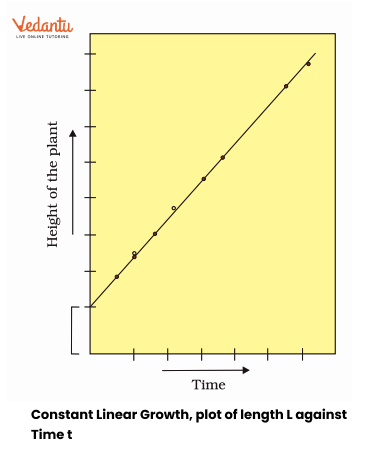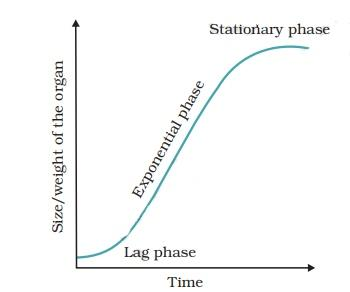Class 11 Biology Chapter Plant Growth And Development Notes - FREE PDF Download
FAQs on Plant Growth And Development Class 11 Notes: CBSE Biology Chapter 13
1. What is Heterophylly?
The plants follow various pathways in response to the environment/phase of life to make different kinds of structures. It is called plasticity. Some instances are heterophylly in cotton, coriander, and larkspur. The leaves of juvenile plants are much different in shape from those in the mature plant. The difference in the shapes of leaves produced in air and those produced in water in buttercup also represent heterophyllous development because of the environment.
2. What does the Sigmoid Growth Curve of a Population Mean?
In a biological organization, growth occurs at many levels, from the molecular level up to the ecosystem level. It can be measured at different levels, such as the growth of a cell organism or population. If it is measured in length, area, volume, mass, or the number of cells or individuals and plotted against time, and the s-shaped curve is obtained. This is known as the sigmoid curve. An analysis of this curve shows a lag phase during which slow growth occurs. This gradually attains a rapid growth, followed by a period of slow growth and ultimately a decline called the stationary phase. Since the same patterns of growth is a sigmoid curve observed at all levels of the organization, it is said to be universal.
3. What are the main topics covered in Chapter 13 of Class 11 Biology?
The chapter covers plant hormones, growth regulators, stages of plant development, and the impact of environmental factors on growth.
4. What are plant hormones and their functions?
Plant hormones are chemicals that regulate various aspects of plant growth and development. Key hormones include auxins (promote elongation), gibberellins (stimulate growth), cytokinins (promote cell division), abscisic acid (inhibit growth), and ethylene (regulate fruit ripening).
5. What is the difference between primary and secondary growth in plants?
Primary growth refers to the increase in the length of roots and shoots, while secondary growth involves the increase in thickness or girth of stems and roots, mainly in woody plants.
6. How do auxins affect plant growth?
Auxins stimulate cell elongation, help in root formation, and influence plant tropisms like phototropism (growth towards light).
7. What are gibberellins and how do they impact plants?
Gibberellins are hormones that promote stem elongation, seed germination, and flowering, helping plants grow taller and produce seeds.
8. What role do cytokinins play in plant growth?
Cytokinins promote cell division and differentiation, and they work with auxins to control plant growth and development.
9. How are Class 11 Biology Chapter Plant Growth And Development Notes organised?
Plant Growth And Development Class 11 Notes PDF Download is structured logically, with clear sections for each topic, making it easier to follow and understand complex concepts.
10. How do Plant Growth And Development Class 11 Notes simplify complex topics?
Vedantu's Plant Growth And Development Short Notes break down complex concepts into simple explanations and highlight key points to aid in understanding and retention.
11. How can Class 11 Biology Chapter Plant Growth And Development Notes help in preparing for exams?
Plant Growth And Development Class 11 Notes provide simplified explanations of complex topics, highlight key points, and organize content logically, making it easier to understand, review, and retain information for exams.



























